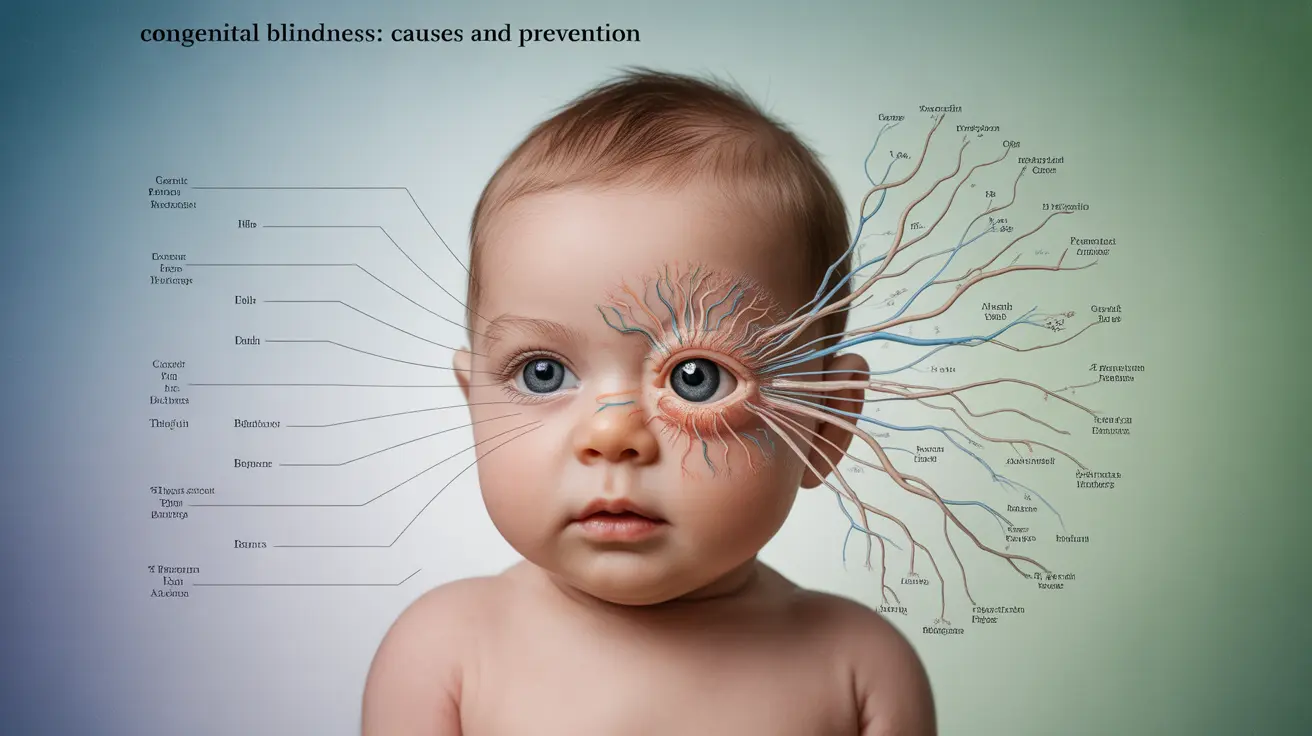Being born blind presents unique challenges for both infants and their families, affecting approximately 3 in every 10,000 births worldwide. Understanding the causes, diagnosis, and available support systems is crucial for parents and healthcare providers to ensure the best possible outcomes for affected children.
Early identification and intervention are key factors in managing congenital blindness, as they can significantly impact a child's development and quality of life. This comprehensive guide explores the various aspects of congenital blindness, from its causes to treatment options and support strategies.
Common Causes of Congenital Blindness
Several factors can lead to babies being born blind or with severe visual impairments. These causes can be genetic, developmental, or result from complications during pregnancy:
- Genetic mutations affecting eye development
- Infections during pregnancy (such as rubella or toxoplasmosis)
- Premature birth complications
- Optic nerve hypoplasia
- Retinal disorders
- Structural abnormalities of the eye
Diagnosis and Early Detection
Healthcare providers use various methods to diagnose vision problems in newborns and young infants:
- Red reflex testing
- Visual response assessments
- Pupillary light response evaluation
- Comprehensive eye examination
- Genetic testing when appropriate
Signs and Symptoms
Parents and caregivers should be aware of these early warning signs:
- Lack of visual tracking by 3 months of age
- Unusual eye movements or alignment
- Absence of eye contact
- Delayed visual development milestones
- White pupils or cloudy corneas
Treatment Approaches and Interventions
While some forms of congenital blindness may not be curable, various treatments and interventions can help manage the condition and optimize remaining vision:
Medical Interventions
Current medical treatments may include:
- Surgical procedures for structural abnormalities
- Gene therapy for specific genetic conditions
- Medications for underlying conditions
- Visual aids and adaptive devices
Early Intervention Programs
Comprehensive early intervention services typically include:
- Vision therapy
- Occupational therapy
- Orientation and mobility training
- Speech and language development support
- Family counseling and education
Supporting Development and Quality of Life
Children born blind require specialized support to achieve their full potential:
- Early childhood education programs
- Braille instruction
- Assistive technology training
- Social skills development
- Physical activity adaptation
Frequently Asked Questions
- What causes babies to be born blind and how is congenital blindness diagnosed?
Babies can be born blind due to genetic factors, infections during pregnancy, or developmental issues. Diagnosis involves comprehensive eye examinations, including red reflex testing, visual response assessments, and genetic testing when appropriate.
- What eye abnormalities are common in infants born blind?
Common eye abnormalities include optic nerve hypoplasia, retinal disorders, structural malformations, corneal opacity, and conditions affecting the entire visual pathway.
- Are there treatments or therapies available for babies born blind, such as gene therapy?
Yes, treatments vary depending on the cause and may include gene therapy for specific genetic conditions, surgical interventions, medications, and comprehensive rehabilitation programs.
- How can early vision screening help in managing congenital blindness in newborns?
Early vision screening helps identify vision problems promptly, enabling timely intervention and treatment. This can prevent further vision loss and optimize development of remaining vision when possible.
- What supportive care options exist for children born blind to improve their quality of life?
Supportive care options include early intervention programs, specialized education, mobility training, assistive technology, occupational therapy, and family support services to enhance development and independence.




